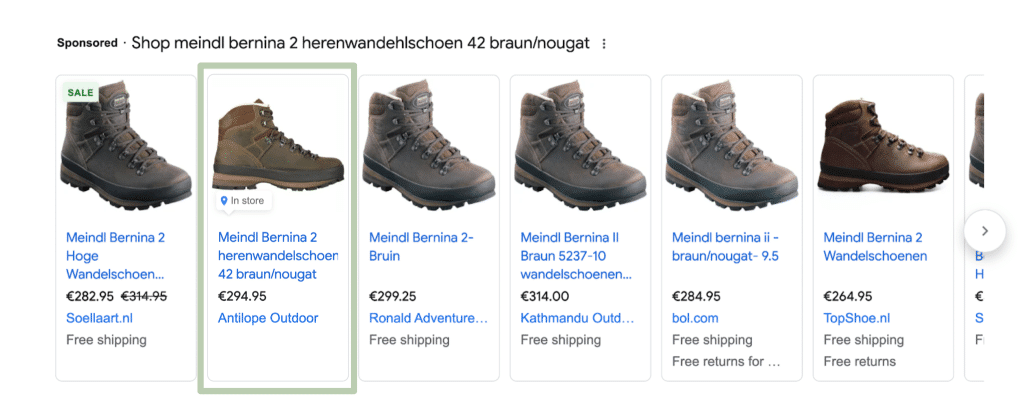Automatic Bidding Strategies Google Ads
Did you know that over 80% of digital marketers’ work is manual? A large part of this manual work involves setting bids for Search Engine Advertising (SEA) campaigns or Display campaigns, for example. Setting bids is error-prone, tedious and, above all, labor-intensive. Imagine not having to do this anymore because a computer can take this from you and do it better. The good news is that Google’s automatic bidding strategies, based on machine learning, can do this. In this article you will read about what bidding strategies are available, what the prerequisites are, when to deploy which one, and what benefits it provides.
What automatic bidding strategies are there?
Google has a total of 5 automatic bidding strategies that can be deployed. It is important to know what bidding strategies are available and what are the prerequisites for deploying them. Below is a brief description of the different bidding strategies:
- Target Roas: This bidding strategy optimizes bids based on your specified “return on ad spend,” or the return you want to achieve on your ad budget. It tries to realize as much revenue value as possible within the set ROAS goal.
- Target CPA: With the bidding strategy Target CPA, bids are optimized based on the cost per conversion you specify. This bidding strategy then attempts to bring in as many conversions as possible at the set cost per conversion.
- Maximum clicks: Tries to achieve as many clicks as possible from the daily budget you entered.
- Maximum conversions: Based on the daily budget that has been set, the bids are directed in such a way that as many conversions as possible are achieved.
- Target impression share (in search only): Based on how much impression share you want, this strategy bases bids. For example, if you want 70% impression share for your campaign, the bids will be steered so that you are actually displayed about 7 out of 10 times.
Preconditions automatic bidding strategies
Because Google’s automatic bidding strategies are based on machine learning, some bidding strategies have boundary conditions for how many conversions you need. These are not hard criteria but apply more as advice. The more conversion data you have the better the bidding strategies work. The quantity of the data in this case ensures more quality.These preconditions apply only to Target ROAS, Target CPA and maximum conversions, the other bidding strategies can be deployed without any data.
| Bid strategy | Minimum Number of Conversions (in the last 30 days) |
| Target ROAS | 50 |
| Purpose CPA | 30 |
| Maximum Conversions> | 10 |
The numbers of conversions are higher than Google itself advises. Practical experience shows that the above numbers are needed before a bidding strategy will work well.
When do you deploy which bidding strategy?
The multitude of different bidding strategies makes it difficult to make a good choice. There are two factors that ultimately determine the right automatic bidding strategy for your campaign. First is the objective of the campaign and whether it is focused on budget or return on investment, in addition, the amount of historical conversion data plays an important role.
Campaign objective
Roughly speaking, there are four objectives a SEA or display campaign can have, these are:
- Visibility
- Website clicks (interaction)
- Conversions (or sales)
- Turnover
In addition to the type of objective, it also affects whether your objective is based on a budget or on a return on ad costs. The diagram below can serve as a guide to determine the appropriate automatic bidding strategy.
| Purpose Campaign | Recommended strategy | |
| Based on budget | Based on ROI | |
| Visibility | Target impression share | No |
| Website clicks | Maximum clicks | No |
| Conversions | Maximum Conversions | Target CPA |
| Turnover | Maximum Conversions | Target ROAS |
Historical conversion data
As indicated earlier, the amount of historical conversion data plays an important role in the ultimate success of an automatic bidding strategy. The more conversion data you have the shorter the learning period and the better and more stable the bidding strategy will perform. The amount of conversion data can therefore be a determining factor in choosing the right bidding strategy. Suppose your goal of a campaign is to determine as much revenue as possible at a certain return on ad costs. Normally, the advice would be to move to a target ROAS strategy. However, should you fail to get the required conversion data of 50 in the last 30 days, a target cpa strategy may work better. This example illustrates the importance of keeping the recommendation guidelines of the number of conversions in mind when determining the right automatic bidding strategy. Advice is to test multiple bidding strategies against each other via experiments in Google Ads.
What are the benefits?
The benefits that an automatic bidding strategy can bring are several. First of all, it saves a lot of time that you can use to make other optimizations that are more fun and advanced. In addition, it yields, almost always, better results than manual bidding. To give an example of this, Google says about the Target ROAS automatic bidding strategy that it can achieve a 35% increase in conversion value versus manual bidding for the same ROAS.
Best practices automatic bidding strategies
Setting bids manually is time-consuming, error-prone and tedious. Google offers several ways to automate this. There are a total of 5 automatic bidding strategies that can help with this. It is important to know the difference between these strategies and ultimately what is the right strategy to choose. The objective of your campaign and historical conversion data are tools that can help you determine the right automatic bidding strategy. To ultimately ensure that you have more time left for other things and at the same time the campaign shows better results, a win-win situation!



